Are you looking to establish a meaningful academic partnership? Crafting a memorandum that clearly outlines your objectives, roles, and expectations can set the foundation for a successful collaboration. This letter template serves as a valuable resource to help you navigate the intricacies of formalizing partnerships in the academic realm. Dive into the details and discover how to strengthen your existing relationships or forge new ones by reading more!
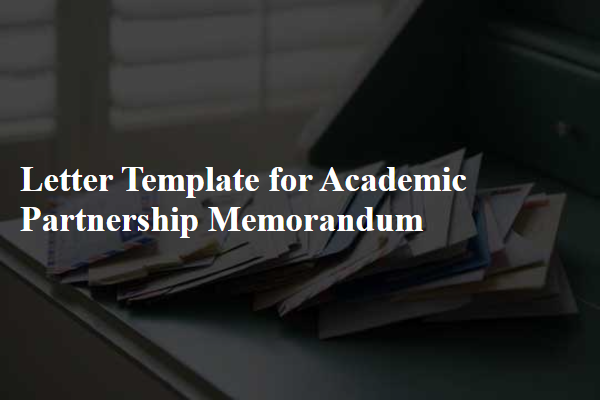
Clear objectives and scope
An academic partnership memorandum outlines clear objectives and scope to facilitate collaboration between institutions. Objectives such as advancing research opportunities, enhancing educational programs, and fostering student exchange initiatives drive the partnership's focus. Specific scopes include joint projects, curriculum development, faculty exchange, and co-hosting seminars or workshops. Targeted disciplines, such as environmental science or international relations, can specify areas of collaboration, while measurable outcomes, like student enrollment numbers or publication targets, are essential for tracking progress. Additionally, a clear timeline for activities and evaluation methods ensures accountability and supports ongoing partnership growth.
Partner roles and responsibilities
The academic partnership memorandum outlines specific roles and responsibilities for each partner within the collaboration. Key entities involved, including institutions such as State University and City College, will define their contributions, such as faculty engagement, resource allocation, and research collaboration. Responsibilities may include the administration of joint programs, funding for student scholarships, and shared access to laboratories and libraries, emphasizing the importance of clear communication channels. Additionally, regular meetings at agreed-upon intervals will ensure transparency and facilitate the exchange of ideas, aligning with institutional goals, fostering innovation, and enhancing educational outcomes for students in the partnership.
Communication protocols
Academic partnerships often require effective communication protocols to ensure collaboration success. Clearly defined communication channels, such as email and video conferencing tools, facilitate seamless interaction among partner institutions, promoting timely sharing of information. Regular meetings, perhaps scheduled bi-weekly, allow for progress updates and collaborative problem-solving, fostering a cohesive partnership environment. Additionally, utilizing a shared online platform, such as Google Drive or Microsoft Teams, enables document sharing, tracking project milestones, and maintaining a centralized repository for important resources. Establishing clear guidelines for communication etiquette, response time expectations, and conflict resolution strategies ensures that all parties engage constructively, ultimately enhancing the partnership's effectiveness and sustainability.
Confidentiality and intellectual property
The establishment of an academic partnership memorandum requires careful consideration of confidentiality and intellectual property rights. Academic institutions, such as universities and research organizations, often collaborate on projects that involve sensitive information, including proprietary research data, unpublished findings, and funding agreements from entities like the National Science Foundation (NSF). Protecting this information is crucial to uphold the integrity of the research process and ensure compliance with ethical standards. Confidentiality clauses protect both parties by outlining the scope of information to be kept confidential, typically for a period of 3 to 5 years. Likewise, intellectual property provisions delineate ownership rights to inventions, discoveries, and educational materials produced during the partnership, often addressing joint ownership and licensing rights. Adhering to federal regulations, including the Bayh-Dole Act, is necessary to safeguard innovation while promoting collaboration between academia and industry.
Duration and termination conditions
The duration of the academic partnership memorandum will be effective for a period of three years, beginning on January 1, 2024, and concluding on December 31, 2026. Termination conditions stipulate that either party may terminate the agreement with a written notice of 60 days under circumstances such as breach of contract, failure to meet obligations, or mutual agreement. Noteworthy is the provision for immediate termination in cases of misconduct or illegal activities associated with the partnership. The partners are encouraged to conduct a review of the memorandum six months prior to the termination date to evaluate the outcomes and decide on potential renewal negotiations.

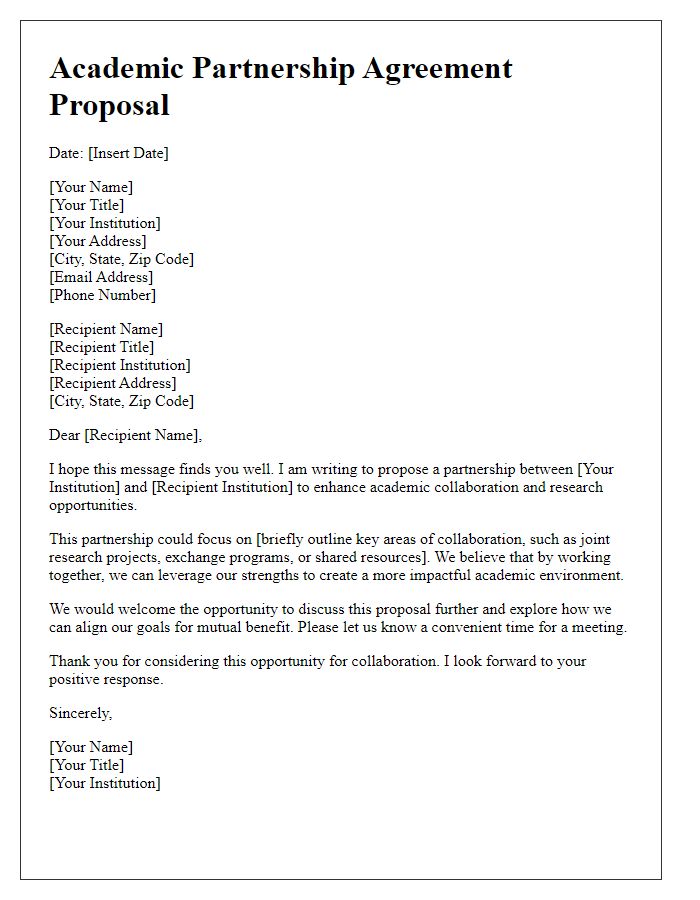
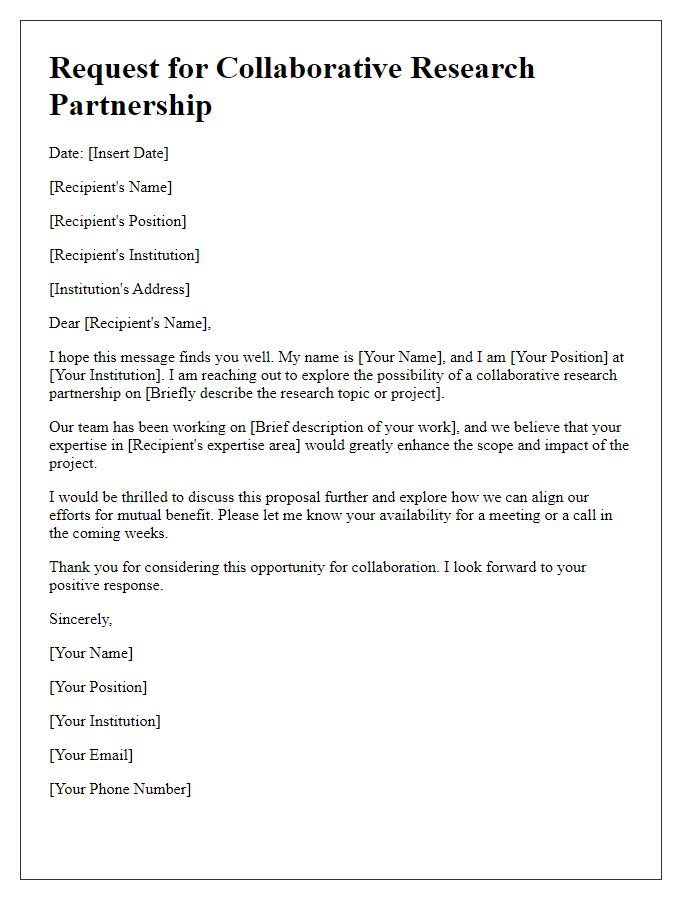
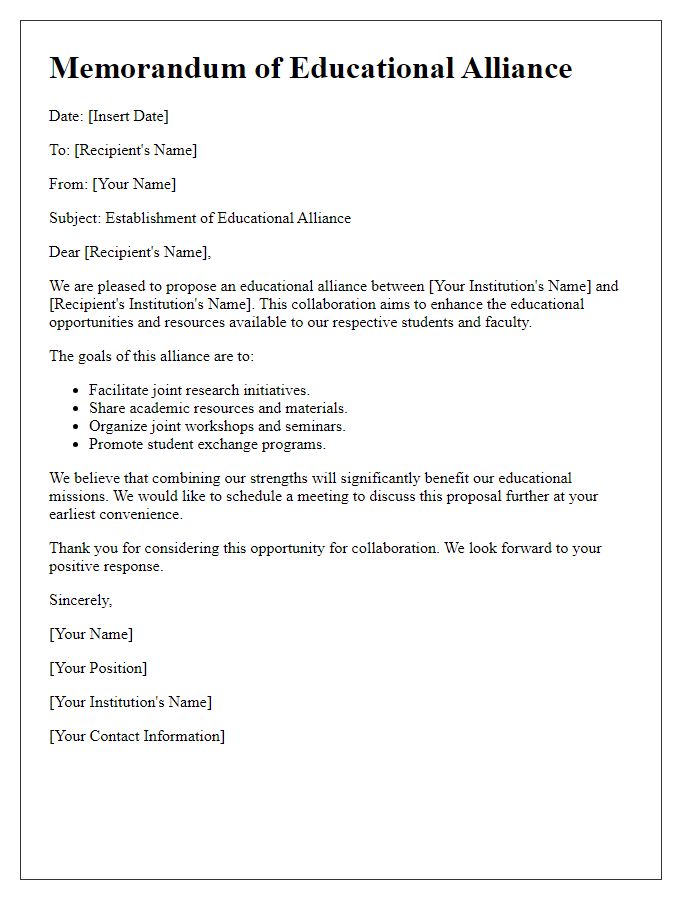
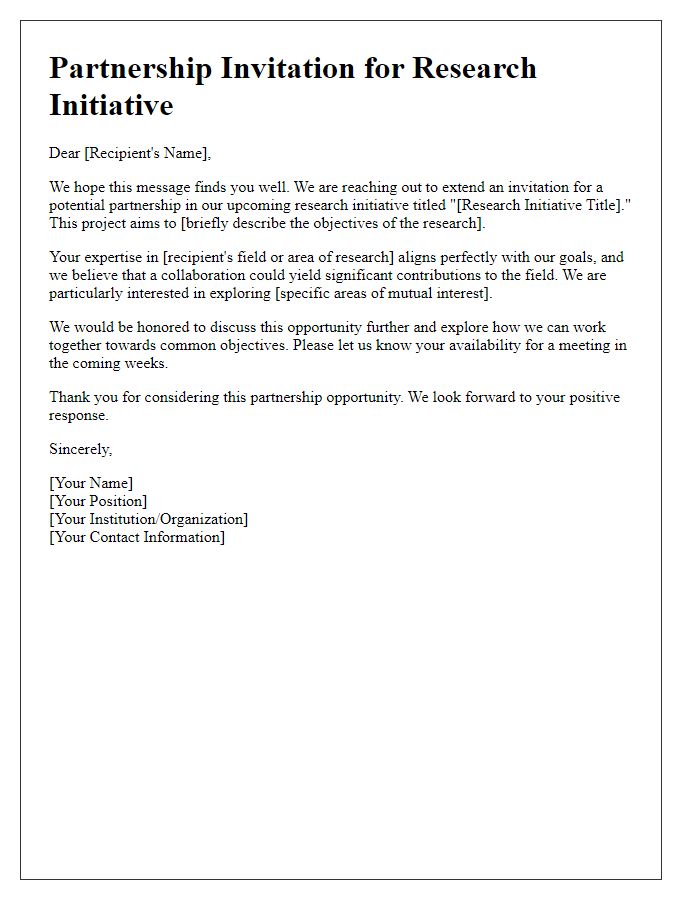
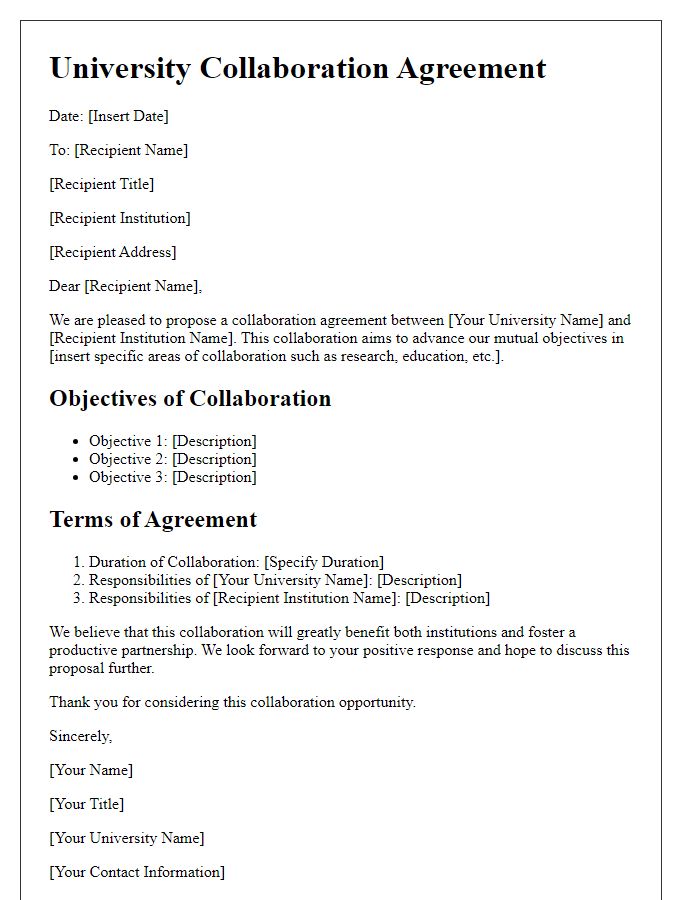
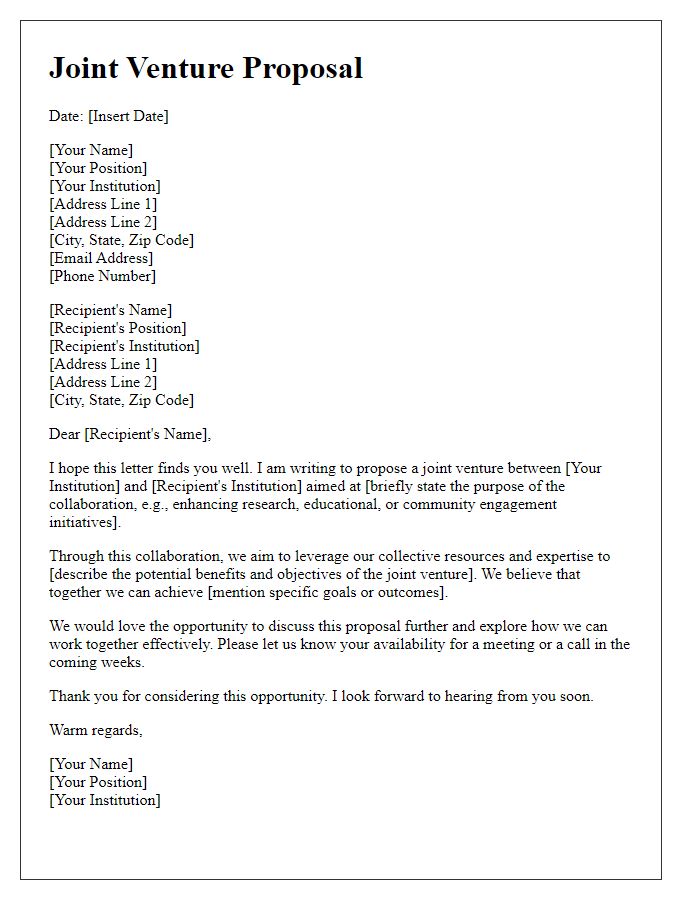
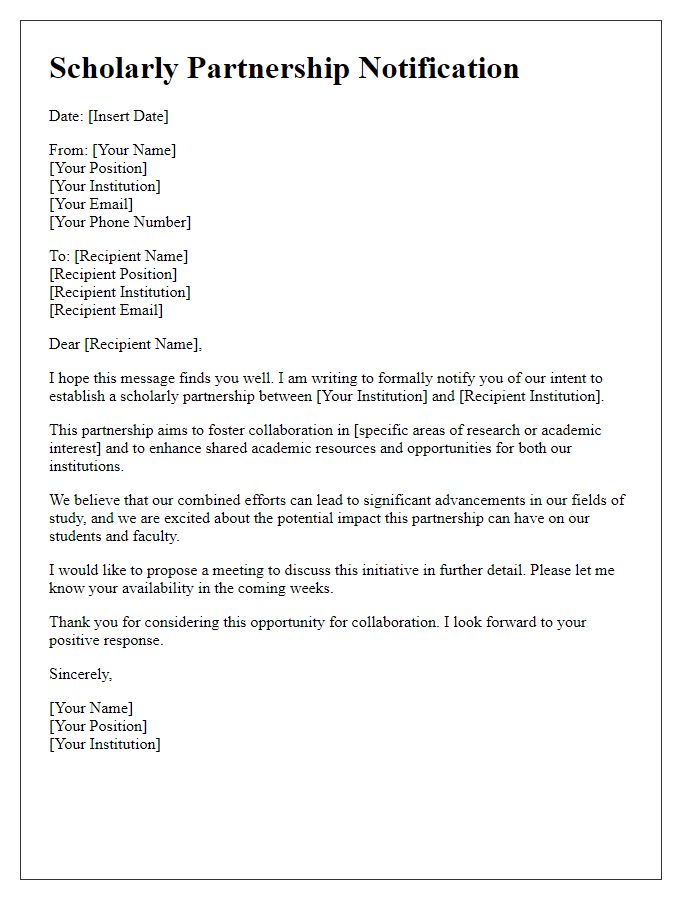
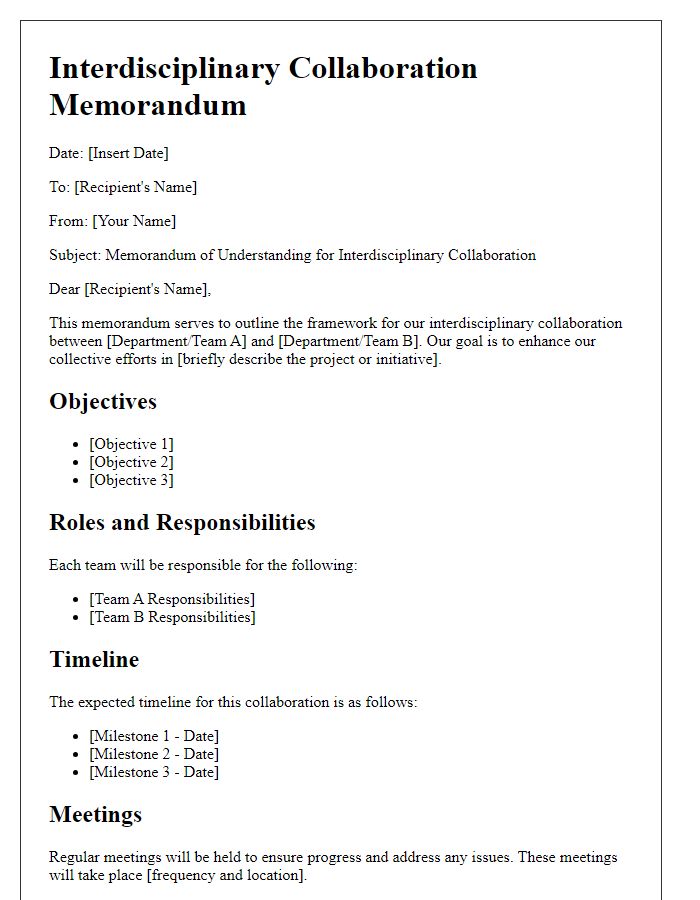
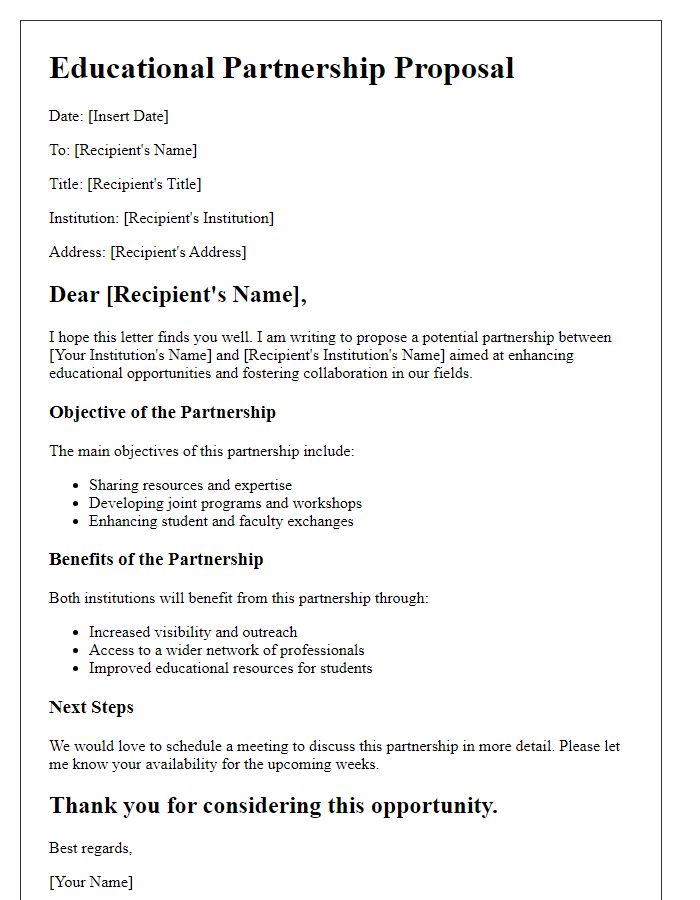
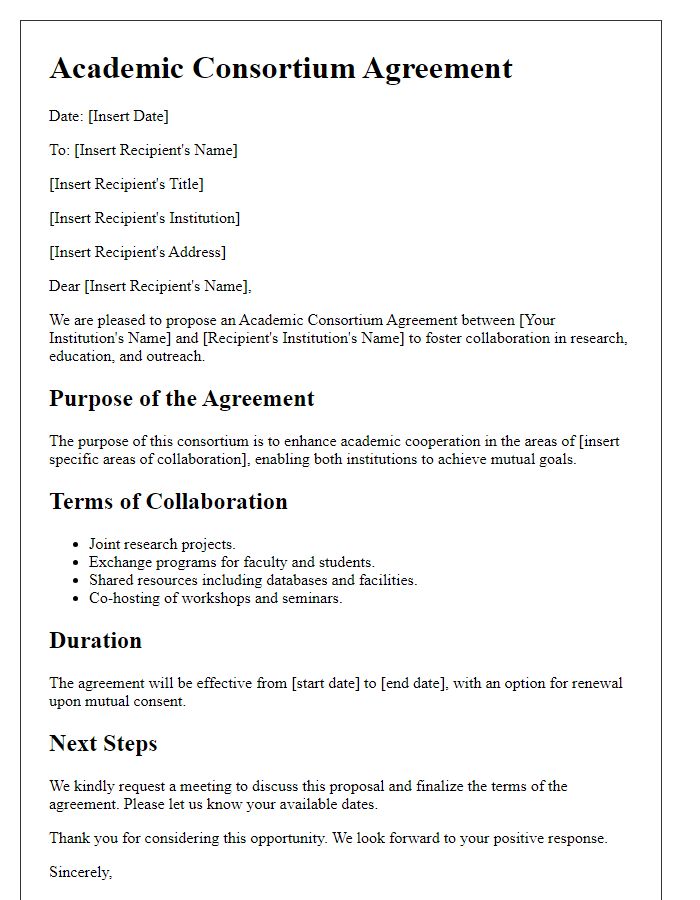

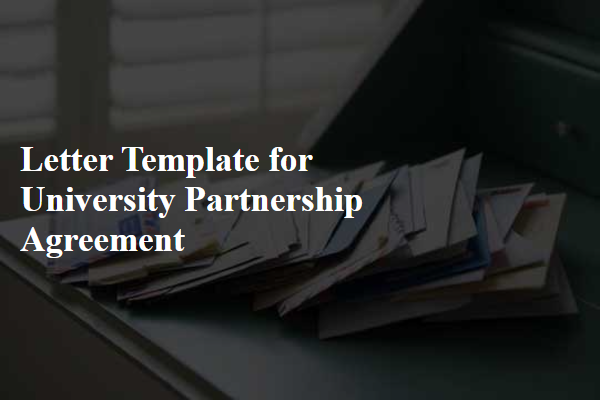
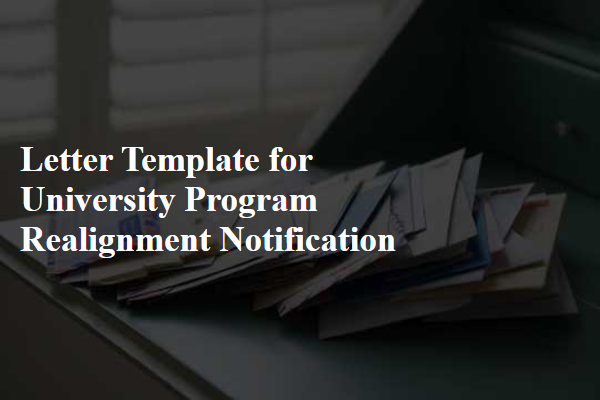
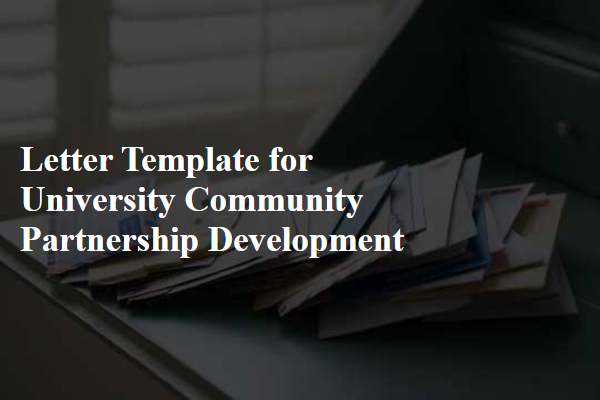
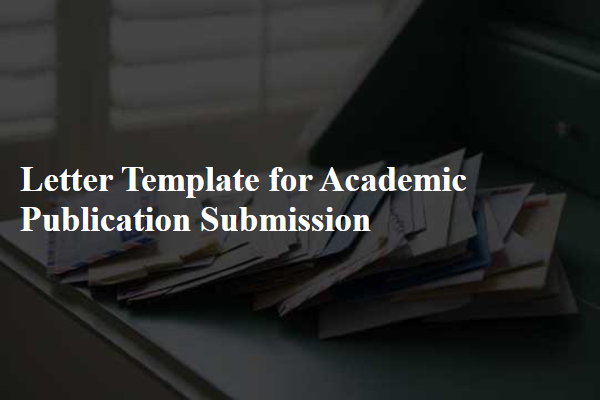
Comments